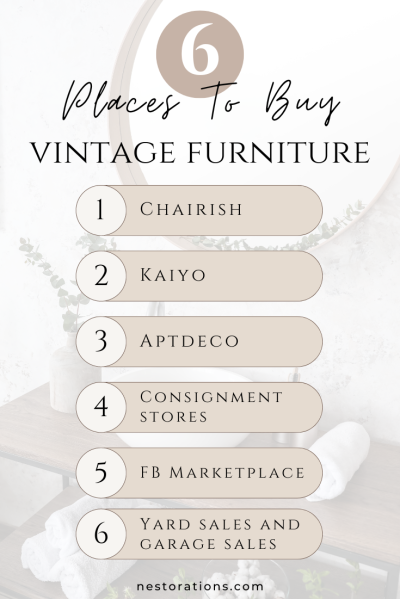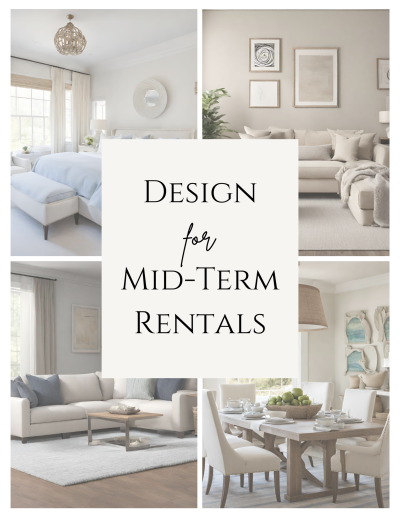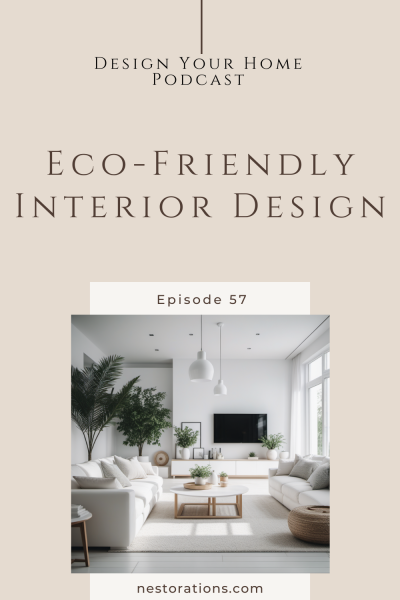
While interior design isn’t always eco-friendly, there’s a lot we can do to change that. Let’s chat about sustainable design for Earth Day and how it can make your home greener. Listen to the podcast above for all the details, or read below for a few highlights.
Listen to the Design Your Home Podcast
Whether you call it eco-friendly, sustainable, or green design, it’s all about reducing our impact on the planet as we spruce up our spaces.
Today, we’re focusing on interior design and decor choices that are kinder to the Earth. Eco-friendly design considers both people and the environment, and looks at a product’s entire life cycle from creation to its place in your home.
We’ll keep it simple since it can feel overwhelming making the “right” choices. But don’t stress…there’s no one “right” answer, just choices with pros and cons. We’re all doing our best here, right?
The goal is to help you make earth-friendly decisions in your home because every little bit makes a difference.
Is What You’re Buying Really Eco-Friendly?
Unsure if your purchases are eco-friendly? Let’s break it down. Materials matter most—like leather, a byproduct of the beef industry known for its environmental impact. Despite seeming natural, leather’s lifecycle involves pollution and long-distance travel.
Comparing leather to faux leather, made from plastic, might seem straightforward. It’s the “real vs fake” argument. But when you consider the full picture, leather’s hidden impacts might surprise you. From high water use and pollution raising the cattle, to the chemicals used in the tanning process, to the transportation and fuel costs involved. Well…leather might not seem so “natural.”
And your choice may reflect your personal values—I personally opt for faux leather because I was a vegetarian for 20 years when I was younger so that works for me. But, it’s about what works for you.
Just as with the real vs. fake Christmas tree debate, eco-friendly choices aren’t always clear-cut. Do what you can, knowing perfection isn’t needed.
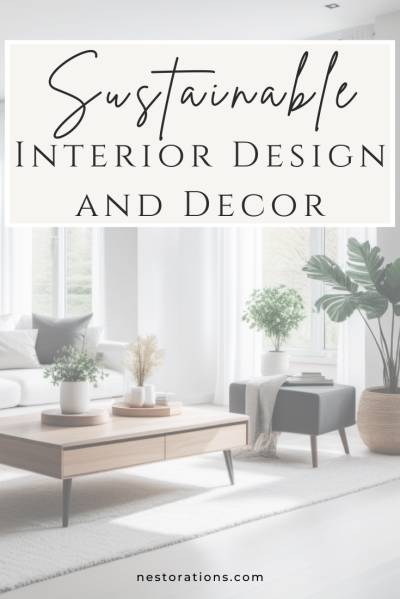
Eco-Friendly Design: Choosing Furniture and Materials
Choosing eco-friendly furniture and materials means prioritizing sustainable woods and fabrics to reduce environmental impact. Opt for wood from sustainable forests and organic fibers to avoid pollution and waste.
Avoid fabrics treated with harmful chemicals like flame retardants, and consider organic options for bedding to minimize skin contact with toxins. Leather and vinyl alternatives both have drawbacks, so weigh your choices carefully.
Check foam products for flame retardants and choose those without harmful chemicals. Look for labels indicating reclaimed wood or certifications like FSC for wood, and OEKO-TEX or GOTS for organic fabrics.
Consider investing in an organic latex mattress, from companies like Savvy Rest (my personal favorite and the mattresses we’ve had in our homes for close to 20 years). Shop at stores affiliated with SFC for more eco-friendly options.
And did you know that Pottery Barn has a Sustainability Shop? It’s a great place to find eco-friendly furniture. Making these conscious choices benefits both the environment and your health.
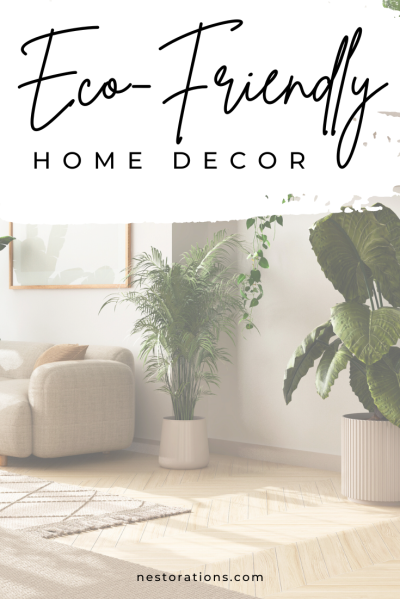
Eco-Friendly Design: How to Reduce Your Home’s Impact on the Environment
Reducing its environmental impact is totally doable when designing and decorating your home. Here’s how:
1. Embrace Vintage: Go for pre-owned furniture and decor. It’s not just eco-friendly; it’s trendy. Plus, you skip the long wait times for new pieces. According to Global Data 2022 Resale Home Furnishings Market Research, the resale furniture market is booming, expected to grow three times faster than traditional retail. So, shopping vintage is mainstream now, no stigma attached.
2. Eco-Friendly Paints: Opt for paints with low or zero VOCs. They’re readily available at stores like Home Depot and Lowe’s, or check out specialty brands like Sherwin Williams or Benjamin Moore.
3. Repurpose What You Have: Before buying new, consider how you can update or modify existing pieces. Refinishing, swapping out parts, or even reupholstering can breathe new life into old favorites without breaking the bank.
4. Water and Energy Efficiency: Invest in low-flow plumbing fixtures and energy-efficient lighting. Look for the EPA WaterSense label for water-saving products and switch to LED lights for long-lasting efficiency.
5. Buy Local: Reduce your carbon footprint by supporting local businesses. It cuts down on transportation emissions and supports your community.
Where to Buy Pre-Owned Furniture
Looking for pre-owned or vintage furniture? I’ve got you covered! Here are some top spots:
1. Chairish: They offer 85% vintage items.
2. Kaiyo: An online marketplace to buy and sell used furniture.
3. AptDeco: An online marketplace to buy and sell used furniture.
4. Local Consignment Stores: They’re everywhere!
5. Facebook Marketplace: Great for furniture and decor.
6. Yard Sales and Garage Sales: Hunt for treasures.
These places might take a bit more time to find the perfect piece, but it’s worth it.
Links to Check Out for More Information
For more information and to research more on your own, you can go to some of the following websites:
Final Thoughts...
I hope you’ve picked up some new information to help you take a small step toward a greener home. The goal here isn’t to be perfect and not to guilt or shame you. It’s about being aware and making those little eco-friendly tweaks that add up and make a difference.
Let’s keep taking those small steps together. Let’s chat over on Instagram @nestorations. Send me a DM and let’s connect!
Connect with me:


